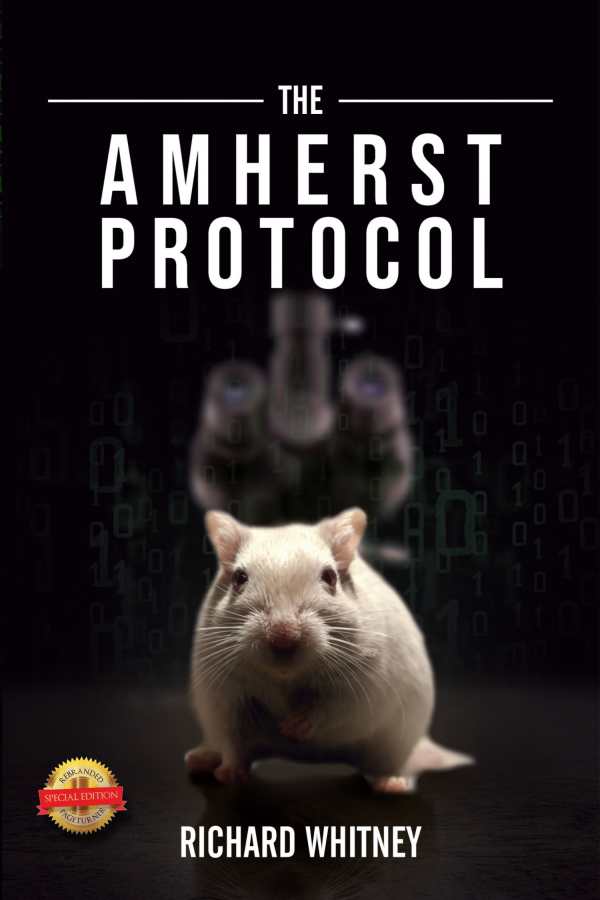
The Amherst Protocol
In the future-set thriller The Amherst Protocol, scientists try to hide secrets from the public, even as a determined journalist works to uncover the truth.
In Richard Whitney’s futuristic thriller The Amherst Protocol, a commemoration of cloning a human heart results in the discovery of a conspiracy.
Clay went into journalism as a skeptic. Thus, he recognizes that something is amiss when the pharmaceutical company representative he’s interviewing denies that he funded related project research—research conducted by a relative of Clay’s. Brian, Clay’s colleague, also runs into dead ends while trying to interview the company’s scientists. When they learn that the company has connections to a security company, Clay and Brian, along with covert government agents and company dissidents, risk it all to stop the scientists from using their work for dark purposes.
The story begins with a mysterious car accident before backtracking to cover the events that led to it. The initial chapters introduce the cast and the science behind the cloning; they move with the same swiftness and determination that Clay and his fellow newspaper workers exhibit as they navigate their high-tech world of instant media sharing, self-driving cars, and bustling city scenes. And Clay is also driven by sex: he’s in a new relationship after his divorce. His investigation runs parallel to his struggles to maintain this relationship, which is complicated by his past. Throughout, accounting for missing information is pivotal to the plot.
As a hero, Clay depends on the stalwart support of others, including Brian, his girlfriend, and his ex-wife. They contribute a fuller sense of his transformation from a mere cynic to an actor on the world stage. Other characters, however, drop out of the narrative with ease; many seem present most to provide comic relief or explain the science behind the cloning. Security protocols at the sites that Clay visits are detailed, as is an innovative skin suit that comes to represent both the benefits and the drawbacks of cloning. In this mix of scientific achievements, Clay functions as a counterpoint to futuristic threats.
But the book’s later chapters are less focused than those that precede them. They include new potential threats, including a congressional bill and other pharmaceutical company projects, that needlessly complicate the plot. Clay discovers that he’s up against greater threats than he at first realized; still, he continues his undercover sleuthing in the company’s territory. At the same time, the science behind the company’s projects is less explained than before, and descriptions of an overwhelming future world dominated by megabusinesses, increased espionage, and security capabilities come to dominate the text. There’s a flare of new activity at the book’s foreboding end, though.
In the future-set thriller The Amherst Protocol, scientists try to hide secrets from the public, even as a determined journalist works to uncover the truth.
Reviewed by
Mari Carlson
Disclosure: This article is not an endorsement, but a review. The publisher of this book provided free copies of the book and paid a small fee to have their book reviewed by a professional reviewer. Foreword Reviews and Clarion Reviews make no guarantee that the publisher will receive a positive review. Foreword Magazine, Inc. is disclosing this in accordance with the Federal Trade Commission’s 16 CFR, Part 255.
